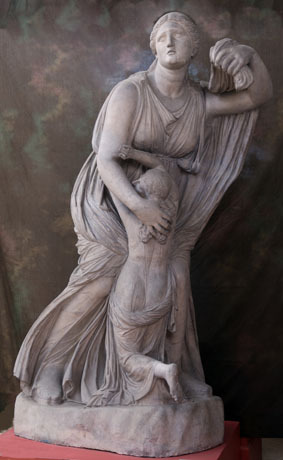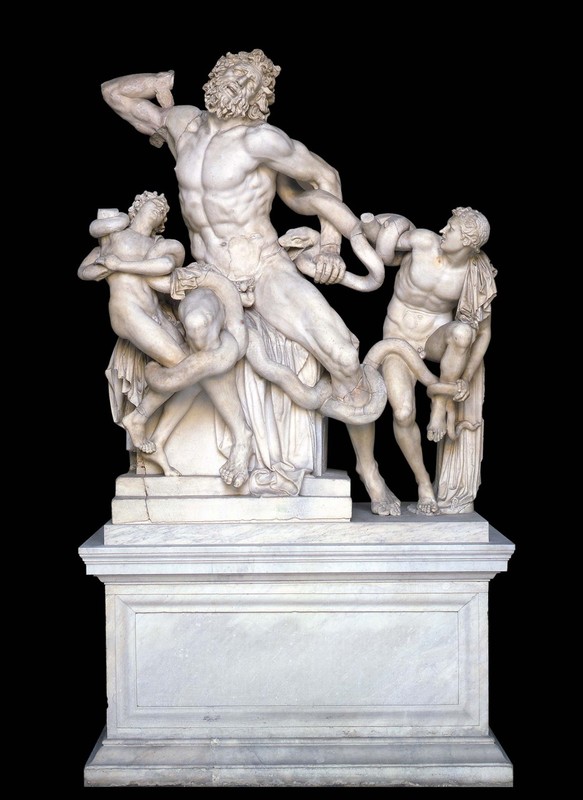The Ideal of Beauty

Figure 2. Statue of Niobe, marble, (Uffizi, Florence).

Figure 3. Laocoön, marble, (Vatican Museum, Rome).
Winckelmann’s differentiation between the ‘high’ mode and the later, ‘beautiful’ mode erected an opposition between the fundamental values of a work of art. In their austerity and careful avoidance of the overly sensual form, works of sculpture in the high mode were more capable of expressing abstract ideas. The beautiful mode, in contrast, was attentive to conveying the beauty of the human form, operating more immediately on the viewer’s sensation, which in turn made it less equipped to convey immaterial ideas.1 Winckelmann's theories thus identified the two principal aims of art--the expression of abstract ideas and the visualization of embodied beauty--as mutually exclusive. This countered the art theory of the time, which held the link between the two as an inherent property of the Greek ideal.2
Further, sculptures in the beautiful exhibited more diversity than those in the high mode, which was so purified and elevated in form that the attainment of this ideal allowed for little variation. Thus, while the high mode expressed “an immutable elevated ideal of beauty”, works of the beautiful exhibited "the varied modulations of natural form and dwell in the realm of the plurality of nature.”3
The opposition between these styles is illustrated in the contrast between the Statue of Niobe (Figure 2), which Winckelmann identified in the high style, and the Laocoön (Figure 3), which he characterized as beautiful. The Niobe captures the figure of Niobe after she has experienced a shock and suffering so severe that it removes any trace of emotion from her face. The inhuman austerity of her expression exemplifies the pure, generalized beauty of the high style. Meanwhile, the Laocoön dramatizes a violent human struggle, in which the hero of the sculpture is strangled and bitten to death by snakes. Its effect is premised upon the viewer’s identification with the sculpture as a human-like form in a moment of suffering. In contrast to the inhuman Niobe, the Laocoön represents a fully embodied mode of sculpture that, to Winckelmann, made it the ideal representation of the beautiful.4